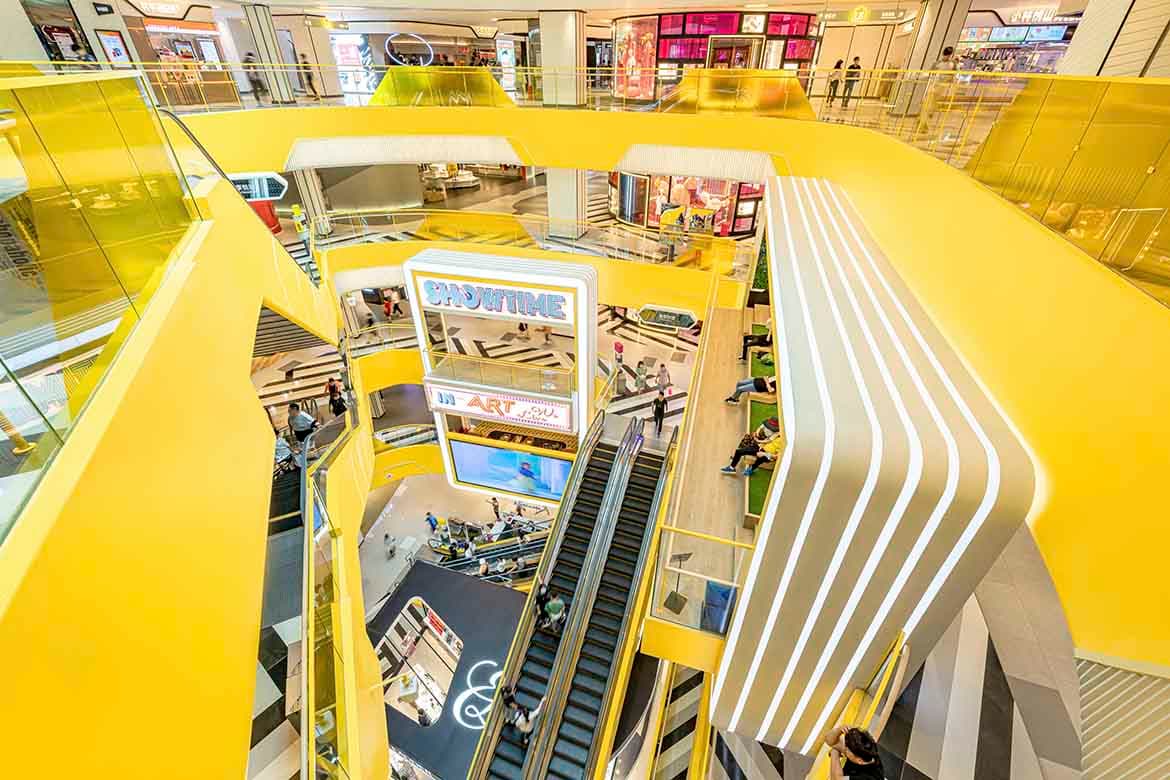
The Resurgence of Top Malls Amid a Retail Identity Crisis
As U.S. malls continue to evolve, some are thriving while others struggle to find their footing in a post-pandemic world. The retail landscape is experiencing a notable resurgence among top-performing malls, yet an identity crisis looms over many others.
The Revival of Premier Malls
In the last year, top-tier malls have demonstrated a remarkable comeback, showcasing the resilience and adaptability of the retail industry. These malls, which account for just 10% of all malls in the U.S., have been able to leverage their prime locations and affluent customer bases to achieve sales growth and foot traffic that often surpasses pre-pandemic levels. As retail consultant Michael Brown points out, "There's still a need for the social aspect of shopping that only physical spaces can provide."
According to data from Placer.ai, foot traffic at A-rated malls increased by 12% in June compared to the previous year, illustrating that consumers are once again drawn to these bustling hubs. The luxury sector has particularly thrived, with brands like Chanel and Louis Vuitton expanding their footprints in high-end malls.
The Struggles of B- and C-Rated Malls
While premier malls are experiencing a renaissance, the challenges facing lower-tier malls are more pronounced. Many B- and C-rated malls have been hit hard by the rise of e-commerce and changing consumer preferences. These malls, which once flourished as community centers, now find themselves grappling with declining foot traffic and increasing vacancy rates.
An estimated 25% of the country's roughly 1,000 remaining malls are predicted to close by 2025, according to Coresight Research. This sobering statistic highlights the urgent need for these malls to redefine their identities and pivot toward more sustainable business models.
The Identity Crisis: What Do Malls Stand For?
The fundamental question facing many malls is, "What do we stand for in today's retail environment?" The answer is not one-size-fits-all. Malls must adapt to the evolving demands of consumers who seek more than just a shopping experience.
Chris Kuiper, an analyst at CFRA Research, emphasizes the importance of innovation: "Malls need to transform into destinations that offer a mix of experiences, from dining and entertainment to wellness and services." This transformation is not just about survival but about creating a unique value proposition that resonates with the local community.
Innovative Approaches to Revitalization
Some malls are embracing innovative approaches to revitalize their spaces. For example, the American Dream Mall in New Jersey has integrated attractions like an indoor ski slope and water park to draw visitors. These experiential elements are designed to make the mall a destination in its own right, offering more than just retail therapy.
Another successful strategy has been the incorporation of mixed-use developments, combining residential, office, and retail spaces to create a vibrant community atmosphere. The Westfield Valley Fair in California is a prime example, offering a dynamic blend of shopping, dining, and entertainment that caters to a diverse clientele.
The Role of Technology in Reinvention
Technology plays a crucial role in the reinvention of malls. By leveraging data analytics and digital tools, malls can enhance the customer experience and personalize interactions. Mobile apps, virtual fitting rooms, and augmented reality experiences are just a few ways malls are bridging the gap between physical and digital retail.
Retail analyst Deborah Weinswig notes, "Technology allows malls to engage with customers on a deeper level, offering tailored experiences that drive loyalty and repeat visits." This technological integration is essential for malls looking to stay competitive in a rapidly evolving landscape.
Looking Ahead: The Future of Malls
The future of U.S. malls is a tale of two paths: one of continued innovation and success for top-tier locations, and another of reinvention and adaptation for those facing an identity crisis. Malls that can effectively redefine their purpose and deliver unique experiences will continue to thrive.
The retail industry stands at a crossroads, where the choices made today will shape the future of shopping for years to come. By embracing change and focusing on the needs of their communities, malls have the potential to emerge stronger and more relevant than ever before.